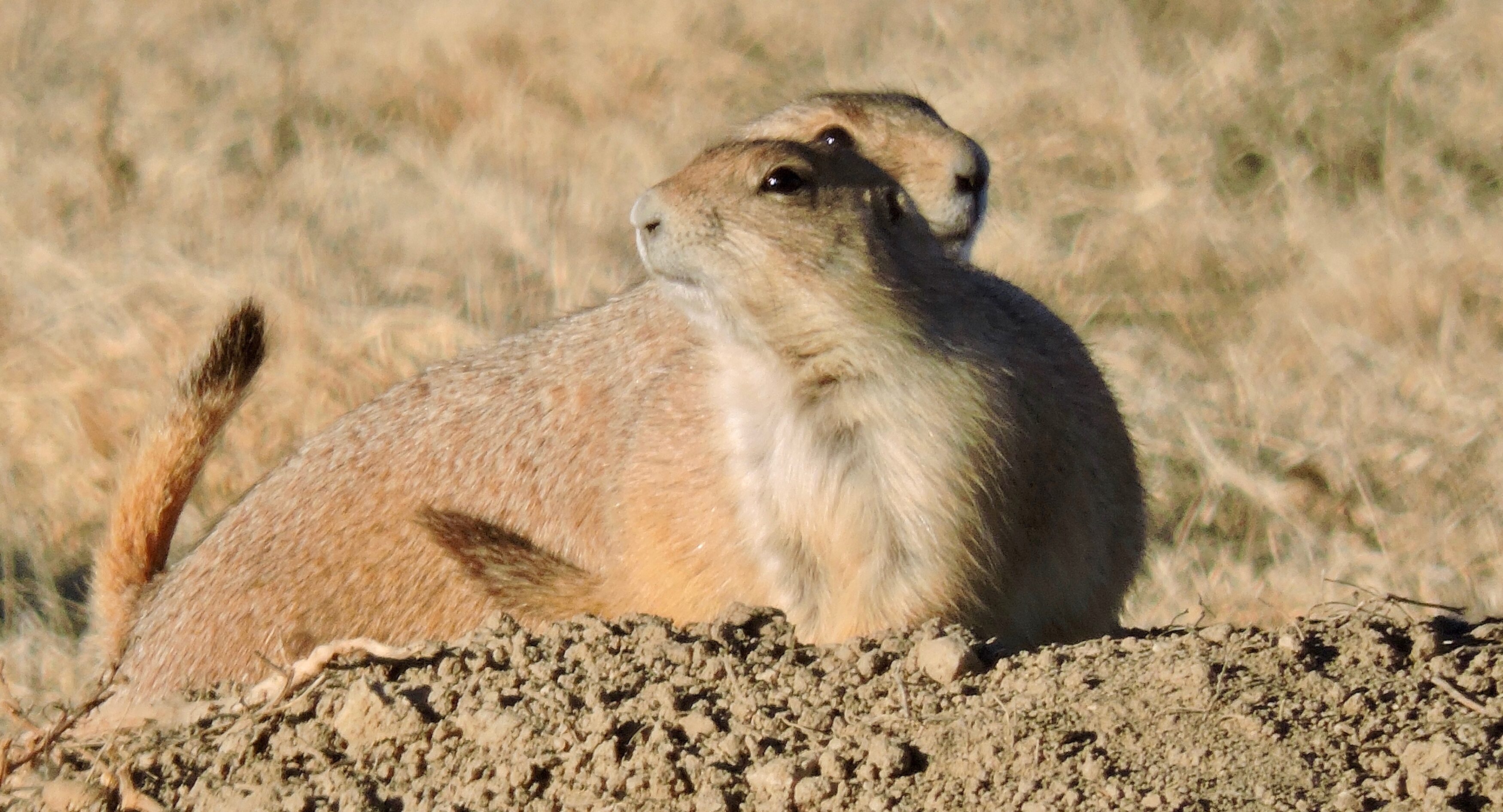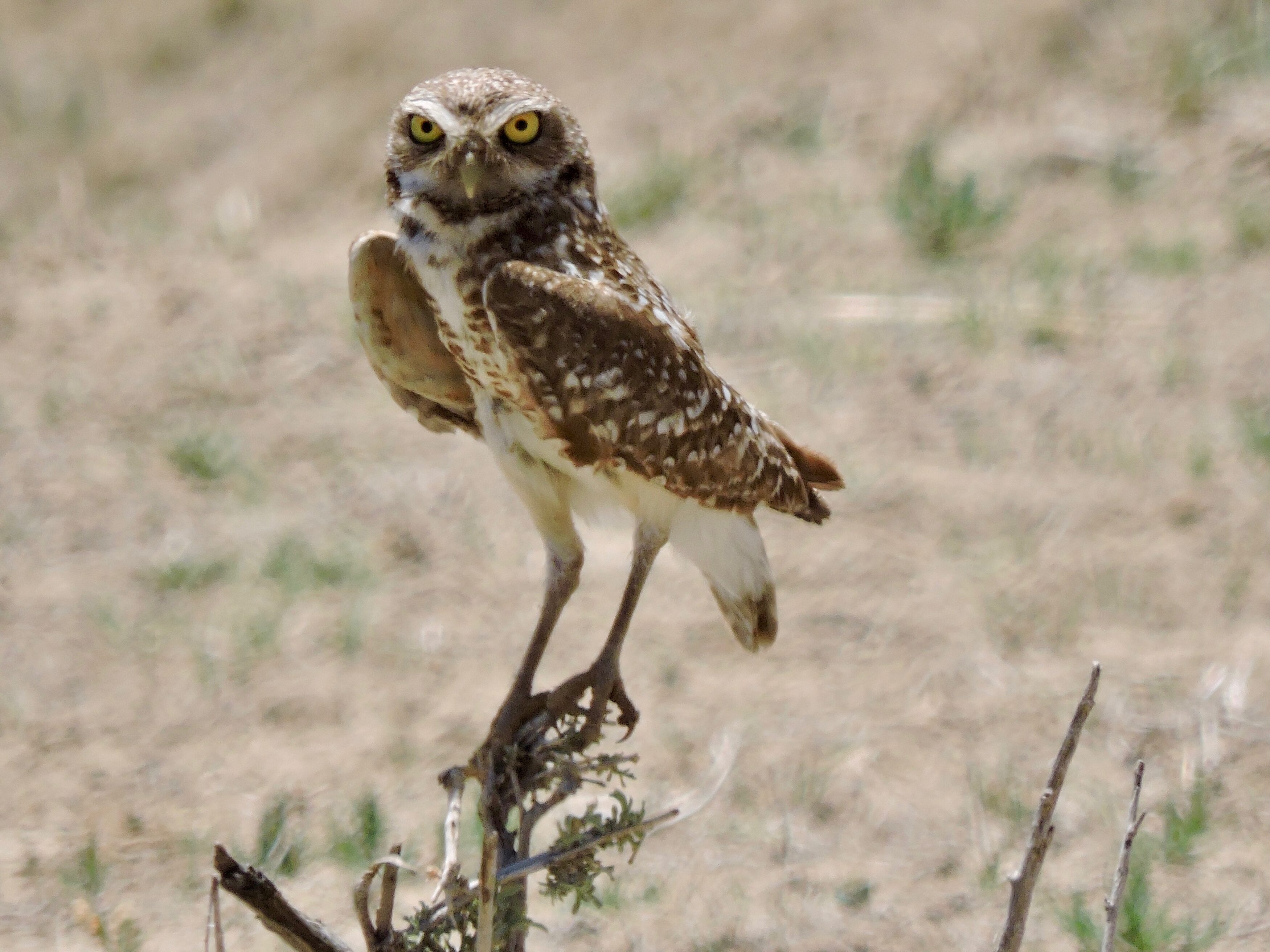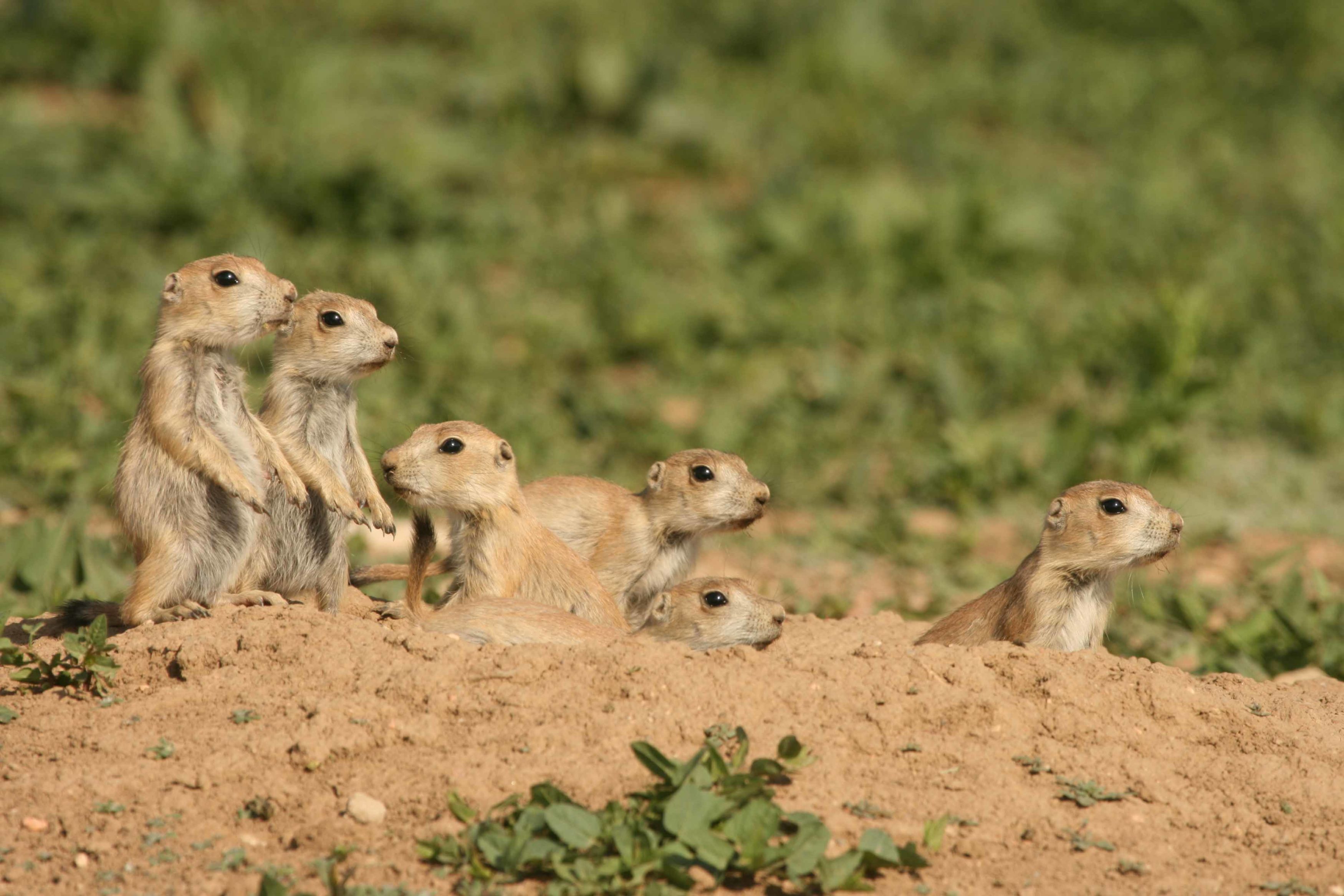Prairie Dog Day
This blog post was authored by Soleil Gaylord, who volunteers for Southern Plains Land Trust. She is a junior at Dartmouth College studying Government and Environmental Studies, and hopes to pursue environmental policy or law.

Black-tailed prairie dogs find refuge on our nature preserves.
Burrowing owls are just one of the species that depend on prairie dogs for their survival. They nest in abandoned prairie dog burrows.
Prairie dogs have a highly developed and complex spoken language.
Swift foxes den in prairie dog burrows and prey on prairie dogs.
Prairie dogs are an important part of a healthy shortgrass prairie.
The first American Groundhog Day, celebrated Feb. 2, 1887, featured a rotund, furry rodent known as Phil. If this mammalian signaller didn’t see his shadow, spring would arrive. If indeed Phil saw his shadow, that forecast six more weeks of snow and cold — a second winter. Groundhog Day has relied upon a myriad of fauna in Europe — badger, hedgehog, fox, and even bear — to predict vernal climatic patterns. While the furred (or quilled, in the hedgehog case) arbiter of spring has changed from bear to hedgehog to groundhog, those of us who treasure the shortgrass prairie ecosystem of the American Great Plains have further adapted the holiday as Prairie Dog, rather than Groundhog, Day, beginning in 2003. Prairie dogs, of which there are five species — Utah, Black-Tailed, Gunnison’s, White-Tailed, and Mexican — once numbered in the several-billion, but now their numbers have been reduced by about 95 percent. Such a decline is worrying because the members of this genus (Cynomys) are quite literally the lifeblood of the prairie ecosystem.
While Punxsutawney Phil will steal the national spotlight on Feb. 2nd, for a western twist, let’s pay homage to Phil’s cousin, the black-tailed prairie dog — a rodent responsible for sustaining the livelihoods of hundreds of other prairie species, the critically-endangered included. The black-footed ferret, a species once thought extinct, relies almost exclusively on the prairie dog for food and habitat. The true epitome of a keystone species, prairie dogs support prairie life below, on, and above ground. Burrowing owls, swift foxes, snakes, salamanders, beetles, and cottontail rabbits reside in prairie dog burrows. Prairie dogs foster a rich ecology of plant and animal diversity on and around their holes by aerating the soil, mixing it with their urine and feces, and by clipping the grasses around their home into short, succulent, nutrient-packed vegetation. Bison, elk, mule deer, and pronghorn prefer to graze upon the rich forbs and grasses tended by the prairie’s primary agriculturalists; species such as the Mountain Plover require the “mowing” services provided by prairie dogs to nest. Species of the aerial realm — ferruginous hawks, horned larks, and golden eagles prefer prairie dog colonies, where there is a heightened preponderance of food.
Mirroring the complexity of the micro-ecosystem that prairie dogs foster is their highly developed, remarkably specialized language. Prairie dogs have 12 distinct calls and a variety of postures to indicate various dangers. Their communications can be as specific as identifying a coyote, a badger, even details as nuanced as the size, shape, and speed of oncoming predators. Prairie dogs are highly social, maintaining contact with members of their coterie — which typically consists of one adult male and a group of adult females and juveniles. Prairie dogs engage in mouth-to-mouth communication, reminiscent of kissing, to recognize their coterie members; members of the same groups also extensively groom one another.
The “coral reef of the prairie,” and therefore those species most reliant on prairie dogs, have significantly seen their ranges contract. Poisoning, recreational shooting, the expansion of agriculture, and ever-persistent development have caused the widespread destruction of the prairie dogs and their habitat, and the pressure does not subside.
Yersinia pestis, the bacterium that causes plague, has also posed a significant threat to particularly-vulnerable prairie dog populations since humans brought it from Asia in 1900. Entire colonies can be wiped out by plague in less than a week. Unfortunately, prairie dogs do not, in fact, “breed like rabbits” — they come into heat for only a few hours each year, and their litter, averaging less than four pups, has a 50% survival rate. Without contiguous, robust habitat and vigilant protections to support their populations, prairie dogs will suffer continued catastrophic decline. With fewer prairie dogs, so go the predators, herbivores, insects, and plants dependent on this keystone creature.
That’s where Southern Plains Land Trust (SPLT) plays an important role. SPLT’s 32,000 protected acres (and growing) are crucial for the survival of the black-tailed prairie dog and the raft of life it keeps afloat. This Groundhog Day, take a moment to appreciate not only Phil but his esteemed relative, the prairie dog. He’s hard at work not only predicting the onset of spring, but keeping his underground quarters tidy for co-habitant burrowing owls, maintaining his lawn for nesting Mountain Plovers, and aerating the nutrient-rich soil for anticipatory grazers.







Recent Comments